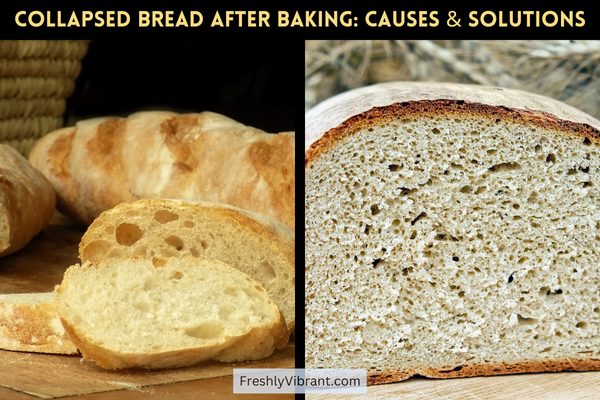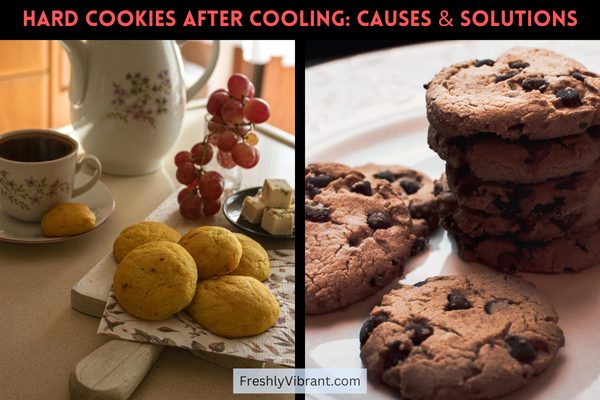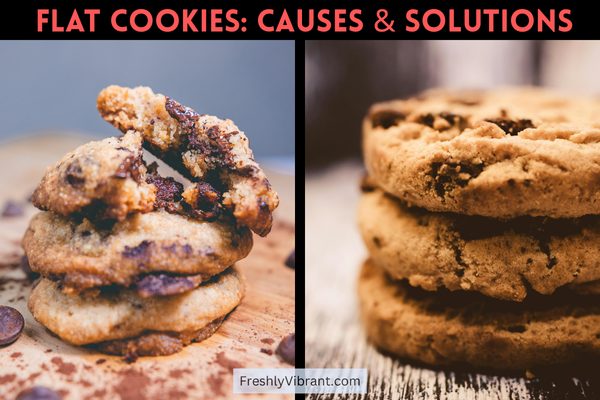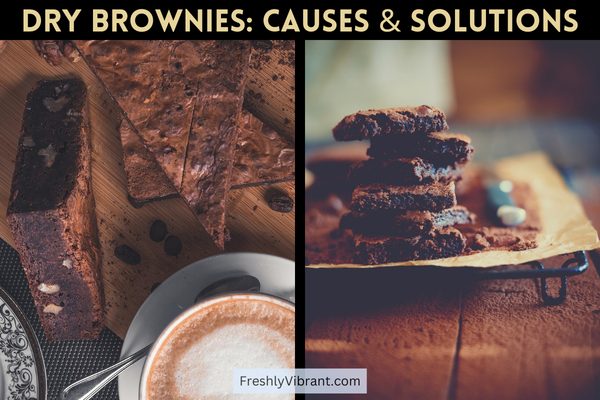Why Do Cake Layers Slide Off? (How to Fix It Like a Pro)
Ever spent hours baking the perfect cake only to watch it slowly collapse into a sugary landslide? We’ve all been there — that heartbreaking moment when your beautifully stacked layers start sliding like they’re late to a party.
Whether you’re a newbie baker or a seasoned pro, layer slippage is more common than you’d think. But don’t worry!
In this guide, we’ll break down why your cake layers might be staging a rebellion, how to fix the mess, and most importantly — how to keep things upright next time. Grab your apron, some buttercream, and let’s get your cake back on solid ground!
Common Reasons Cake Layers Slide Off Each Other

Using warm cake layers (spoiler: they sweat and slide!)
Oh man, ask me how I know this one. One time I thought I’d “speed up” the process by stacking slightly warm cake layers because I was running behind for a birthday party.
Big mistake. The frosting melted faster than I could blink, and the top layer slid halfway off like it was trying to escape the kitchen. Lesson learned: warm cakes = cake landslide. Always let them cool completely. Even better? Chill them in the fridge for 30 minutes before stacking.
Overly slippery fillings like jam or ganache without barriers
I used raspberry jam once because it looked so pretty in the Pinterest picture. I didn’t know I needed a buttercream dam around it. Well… jam is slippery. Without that frosting “fence,” the layers just skated off each other like figure skaters. If you’re using a thin or oily filling (like ganache or fruit spread), always pipe a ring of stiff buttercream around the edge before adding your filling.
Uneven or domed layers causing imbalance
If your cake layers aren’t flat, your cake is gonna lean — it’s simple gravity. Domed tops are cute but dangerous in layer cakes. I used to avoid leveling because I didn’t want to “waste cake,” but trust me, a toppling cake wastes way more. Use a serrated knife or leveler and trim those peaks.
Too much frosting between layers
I know it’s tempting to go big on the frosting. We’ve all been there. But if you slather on too much between the layers, you’re basically greasing up the whole structure. The layers can’t grip, and they’ll eventually slide apart like a greasy sandwich. Less is more when it comes to structural frosting — just enough to hold.
Not enough time for chilling and setting
This one is sneaky. You think, “Looks stable enough,” and boom — by the time you get to the party, it’s a frosting avalanche. Chilling between steps is critical. After stacking and crumb-coating, pop that cake in the fridge for 30–60 minutes. It helps everything set and firms up soft fillings and icing.
Leaning tower of Pisa-level stacking mistakes
Been there, done that, got the lopsided cake. If your cake board or surface isn’t level, you’re building on a slope. Also, eyeballing your layers without checking alignment is risky. Use a turntable or step back often to spot lean early. Don’t be afraid to adjust as you go.
Buttercream or icing too soft or runny
Ever tried frosting a cake on a humid day with soft buttercream? It’s like using lotion to glue bricks together. Your frosting should be stiff enough to hold its shape. If it’s too soft, chill it for 10–15 minutes or mix in a little more powdered sugar until it’s firm but spreadable.
Lack of internal support in tall cakes
If you’re building a cake taller than three layers, you need internal support. Period. I once stacked five layers with no dowels and… let’s just say the dog enjoyed the results. Use wooden dowels or bubble tea straws in the lower layers to hold everything steady. It’s like scaffolding for your sweet creation.
How to Fix a Slipping Cake (Emergency Cake Surgery!)
Okay, so your cake is leaning like it’s had one too many sips of vanilla extract. First things first — don’t panic. You’ve got more power (and frosting) than you think.
Chill the cake immediately to firm things up
If the layers are slowly sliding, the fastest fix is to stop everything and chill it down. Literally. Pop the cake into the fridge for at least 30 minutes. Cold buttercream acts like edible cement — once it firms up, you can reassess and do some damage control.
Use a cake scraper or offset spatula to realign layers
Now that things are a little more solid, gently nudge the layers back in place. I usually go in with an offset spatula and slowly scoot them where they belong. You’d be surprised how forgiving cake can be once it’s chilled a bit. Take your time — you’re basically giving it a chiropractic adjustment.
Add dowels or straws for quick support
If it’s a tall cake and you skipped internal supports (hey, no judgment), now’s the time to fix that. Push in some bubble tea straws or wooden dowels — even regular drinking straws can work in a pinch. Just make sure they’re cut level with the top of the cake.
Scrape off excess filling and re-stack
Sometimes, the culprit is too much slippery filling. If your layers are sliding around like bumper cars, carefully remove the top layers, scrape off some of the jam or ganache, and restack with a firmer hand. Add a buttercream “dam” this time to keep everything where it belongs.
Patch up frosting gaps with a cold spatula
You’ll probably see some frosting cracks or bulges after restacking. That’s normal. Take a chilled spatula (yep, you can run it under cold water and wipe it dry), and patch things up slowly. Cold tools give you more control and reduce melting while you work.
Wrap the cake with acetate or a cake collar until set
This trick saved my bacon once. I wrapped the sides of a semi-sliding cake with an acetate collar (you can even use parchment paper in a pinch) and secured it with tape. Then I chilled the whole thing for an hour. When I peeled it off? The cake looked shockingly decent. It’s like a cast for a broken cake.
Pro Tips to Prevent Cake Layers from Sliding Next Time
Once you’ve lived through a cake landslide, prevention becomes your new religion. These are the tricks I wish I had learned before I started building layer cakes like a wild optimist.
Always let layers cool completely before stacking
Let me say this louder for the folks in the back: warm cake layers are your enemy. Even if they feel “just slightly warm,” they’ll create steam, melt your frosting, and boom — slippery slope begins. I now bake my layers a day ahead and chill them overnight. Cold cake = easy stacking = zero regrets.
Level each layer with a serrated knife or cake leveler
Uneven layers = wobbly cake. I used to skip this step because “meh, it looks flat enough.” Spoiler: it wasn’t. A little dome on each layer adds up fast, and before you know it, your cake is leaning like it’s got attitude. Just take a serrated knife and trim the tops. Bonus: you get cake scraps to snack on.
Use a buttercream “dam” to hold in slippery fillings
Jam, curd, ganache — they’re all delicious, but they’re also escape artists. A buttercream dam is like a wall around your filling. Pipe a ring of stiff buttercream before adding any slick stuff in the center. Keeps everything in its lane and your cake layers from going rogue.
Chill the cake between frosting stages
This one changed everything for me. After stacking and crumb coating, chill the cake for 30–60 minutes before applying the final coat. And again before decorating. Each chill session helps the cake set like concrete (in a good way). It also makes smoother frosting way easier.
Stack on a flat, stable surface (no tilted cake boards!)
I once built a cake on a slightly warped cake board. Didn’t notice until it started sliding like a slow-motion car wreck. Use a flat, sturdy surface. If your cake board bends when you pick it up — it’s not strong enough.
Use internal supports for taller cakes (wooden dowels, bubble tea straws)
If your cake is taller than 3 layers, treat it like construction. Insert dowels or thick straws to hold it up. I learned this one the hard way after stacking four layers of red velvet and watching the top two layers slide off like melting snow. Now I always “engineer” my tall cakes.
Go easy on the filling — you’re frosting a cake, not icing a bowling alley
A thick layer of filling feels generous, but it’s really just a grease trap waiting to happen. Spread it thin, make it even, and don’t let it squish out the sides. A little goes a long way when you want your cake to actually stay a cake.
Frosting & Filling Do’s and Don’ts
There’s a fine line between a beautifully stacked cake and one that slowly becomes a dessert pancake. Most of the time, the difference is your frosting and filling choices. Trust me, these do’s and don’ts aren’t just suggestions — they’re survival strategies.
✅ DO use stiffer frosting for stacking layers
When I first started, I thought all frosting was fair game. Nope. Soft, airy frostings like whipped cream or overly warm buttercream are great on cupcakes — but they don’t hold up to the weight of multiple cake layers. For stacking, you need a thicker buttercream consistency — think peanut butter texture, not pudding.
❌ DON’T use only whipped cream on hot days
Whipped cream in the summer? That’s a no from me. It melts faster than you can say “cake fail.” I once brought a whipped cream–frosted cake to a cookout and watched it wilt like lettuce in the sun. If you must use it, stabilize it with gelatin or mix it with mascarpone, and keep that baby refrigerated.
✅ DO test your frosting consistency (Goldilocks style: not too hard, not too soft)
It should be firm enough to hold layers in place, but not so stiff that it tears your cake. I always swipe a test smear on the side of a bowl. If it holds shape and doesn’t slump? You’re golden. If it slides or is tough to spread, tweak with powdered sugar or a bit of milk until it hits that sweet spot.
❌ DON’T skip the crumb coat — it acts like cake glue
Crumb coats aren’t just for aesthetics. They seal in loose crumbs, lock everything in place, and act as a “primer” for your final coat. Without one, your outer frosting can slide right off — especially if the cake sweats a little or the room is warm. Always chill the cake after the crumb coat too. Non-negotiable.
✅ DO refrigerate between layers and after frosting
Refrigeration is your best friend. Every time I skip this step, I regret it. After stacking the cake and applying the crumb coat, I give it at least 30 minutes in the fridge. After the final coat? Back in it goes. Chilling firms up the buttercream, reduces sliding, and gives the cake a stable, professional finish.
❌ DON’T stack layers while still warm — ever. No exceptions!
I know we’ve already talked about this, but I’ll repeat it here because it’s that important. Warm cake will steam and melt your frosting from the inside out. Even if you’re in a rush, wait it out or use the fridge. I promise you, it’s better than watching your layers shift like tectonic plates mid-party.
Tools That Help Keep Your Cake in Place
You can eyeball a cake into place all you want — but the right tools? Total game changers. Once I invested in a few basics, my layer cakes went from wobbly disasters to “Did you buy that?” level. Here are the MVPs that every cake-lover should have on hand.
Cake leveler or serrated knife
You can’t build a sturdy cake on bumpy layers. A serrated knife works fine, but a cake leveler gives you even more control. I bought a cheap wire leveler on a whim and never looked back. Level layers = no lean, no stress, and fewer frosting slide-outs.
Turntable for smoother frosting and adjustments
My first few cakes were frosted on a dinner plate, and let’s just say… never again. A basic cake turntable lets you spin as you frost, smooth, and stack. You get even layers, better symmetry, and it’s so much easier to spot if anything’s going off-kilter.
Offset spatula and bench scraper
An offset spatula gives you control when applying frosting between layers or patching up sides. A bench scraper, meanwhile, smooths those outer edges like a dream. I use both every time I stack a cake. The offset helps you place with precision, and the scraper evens everything out after.
Dowels or straws for inner structure
If you’re building anything taller than three layers, these are a must. Bubble tea straws are my go-to — they’re cheap, sturdy, and easy to cut. Just pop a few straight down into the base layers before stacking more. I even use a ruler to make sure they’re cut level. It’s a simple step that saves your cake from collapsing.
Acetate cake collars for temporary support
These clear plastic strips are super handy when your cake needs a little “hug” while setting. You just wrap the collar around the cake, secure it with a clip or tape, and refrigerate. It keeps everything aligned while the frosting chills. Great for tall cakes or when things feel a little…shifty.
Piping bags for precise buttercream placement
Not just for decorating! I use piping bags to apply frosting between layers — especially when I’m creating a buttercream dam to hold in fillings. It gives you way more control than smearing with a spoon. Plus, less mess and better stacking precision.
Conclusion:
Sliding cake layers? Been there, cleaned that off the counter. But now that you know why it happens and how to stop it, your next layer cake will stand tall and proud — just like you will when everyone asks, “You made that?”
Remember to chill your layers, be generous with support, and keep things level. And hey, even if it goes sideways again, just call it a “deconstructed layer cake” and watch people nod in admiration.






